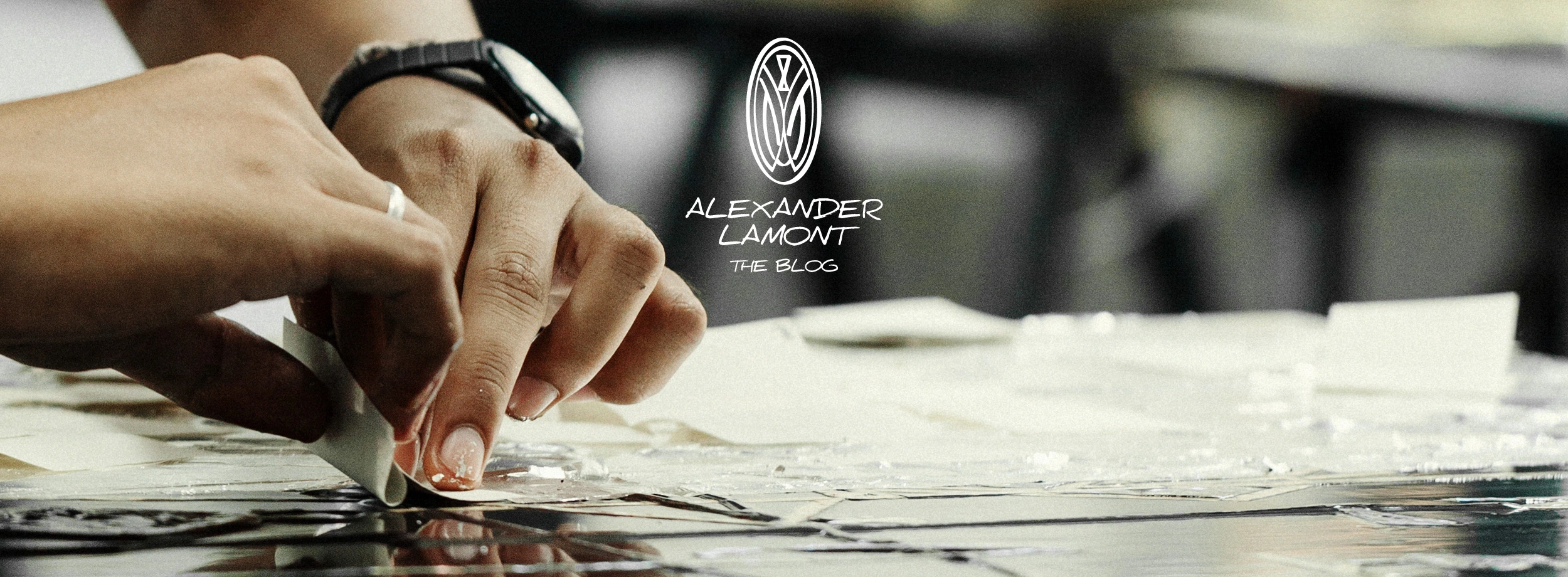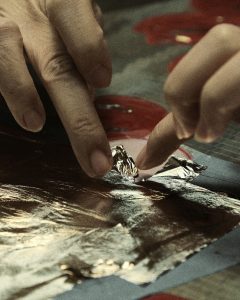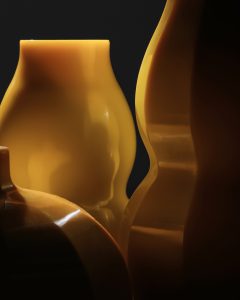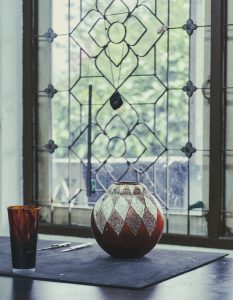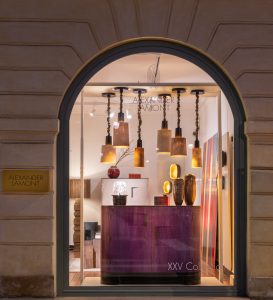In looking back at great craft traditions, gesso is one of the unsung heroes. It was developed originally as a base for the pigments and gilding that decorated wooden statuary in European medieval churches. The statue was covered with canvas and then gesso was applied in layers with sanding between. The gesso was white, strong, smooth and most importantly the constituent rabbit skin glue allowed it to stretch as the wood expanded and contracted between winter and summer. The strength was derived from Calcium Carbonate powder.
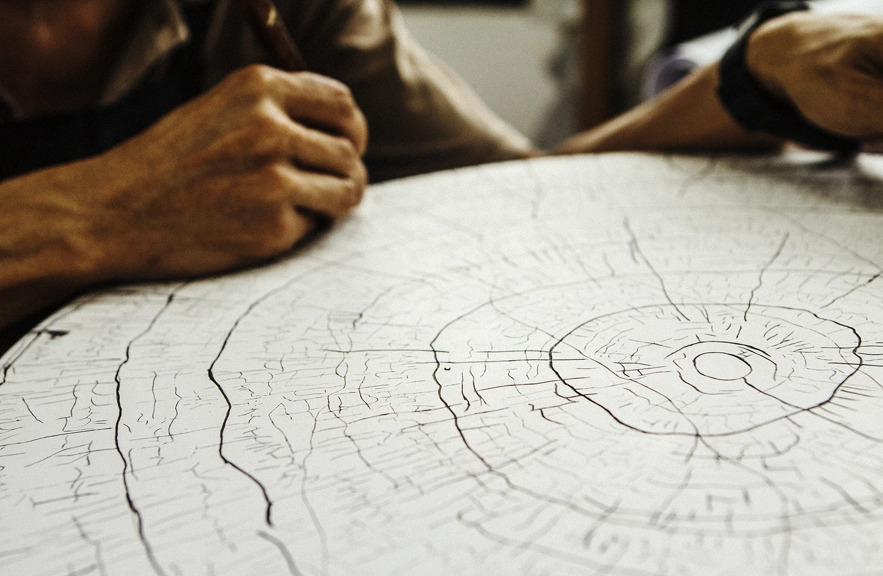
Craftsman working on the Antique Ivory Crackle Tusk technique developed by Alexander Lamont.
Gesso, therefore, is a material that is totally made by hand from the mixing of the powder and the thick yellow glue to the application onto the canvas base and the copious amount of sanding between layers. We start with this basic technique and take it forward through several creative steps to make our own surfaces, textures and materials. We literally design and then make our own ‘skins’.
Our famous Antique Ivory Crackle Tusk – seen on the Amaranth Lamp table and Masa Studio Box – was created in the pursuit of a surface that as close as possible re-created the wonderful burnished surface of old ivory. It has the same subtle craquelure, deep grooves and rich lustre of an antique sheet of ivory but no elephant was involved in its creation!
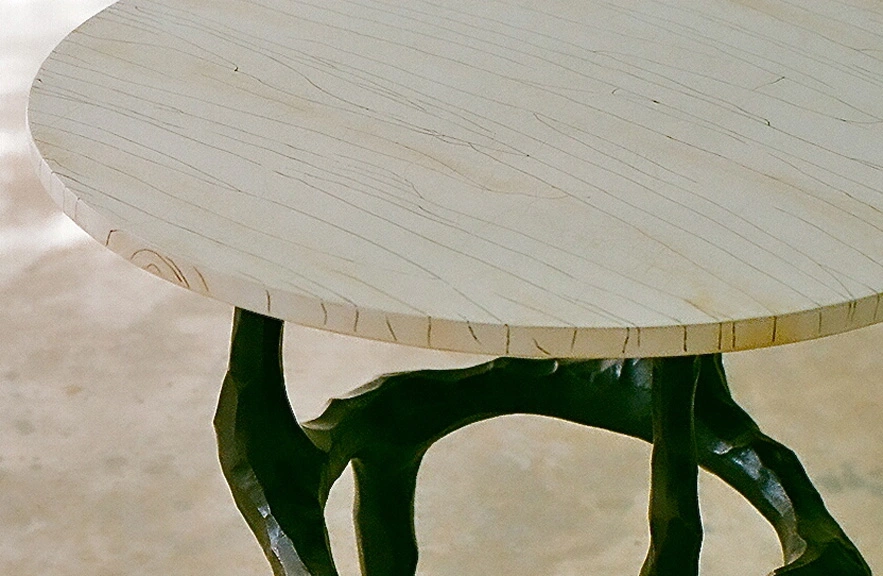
The Amaranth Lamp Table with our Antique Ivory Crackle Tusk surface and faceted bronze legs.
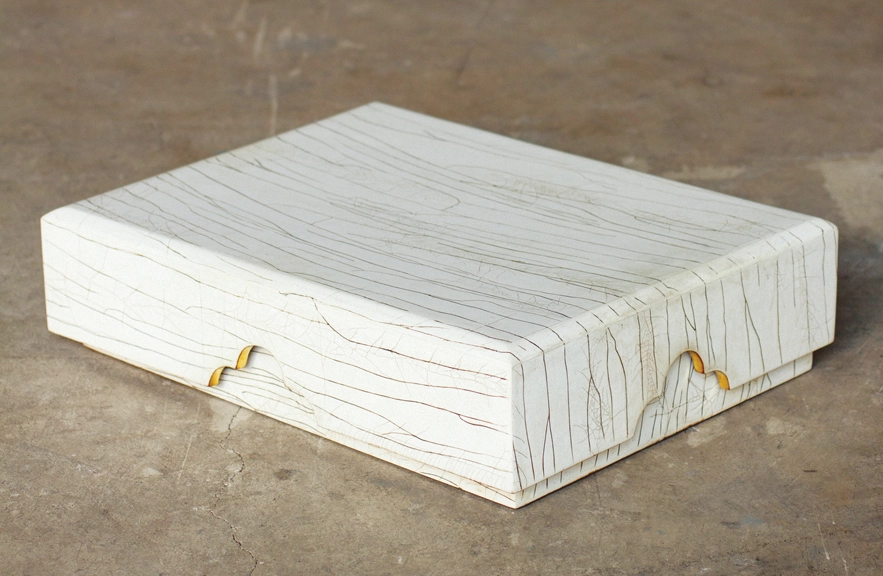
Masa Studio Box covered in antique ivory tusk gesso with gilded handle edges. The interior is lined with lacquer and the inner tray is parchment.
Another gesso technique is one we call “cracked lacquer” whereby we combine a gesso base and lacquer to create a cellular pattern rich with depth and movement. The lacquer adds a layer of contrasting polished black to the deep white fissures made by hand.
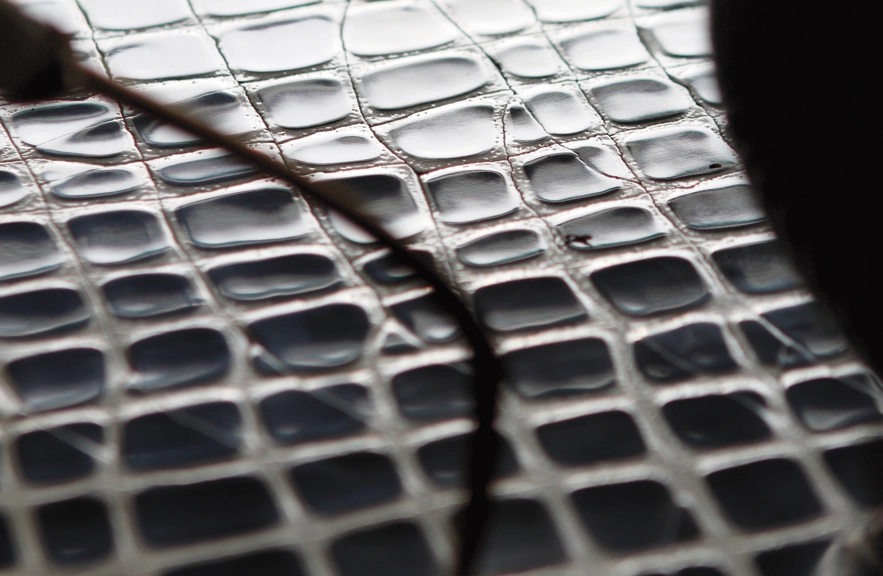
Cracked Lacquer gesso.
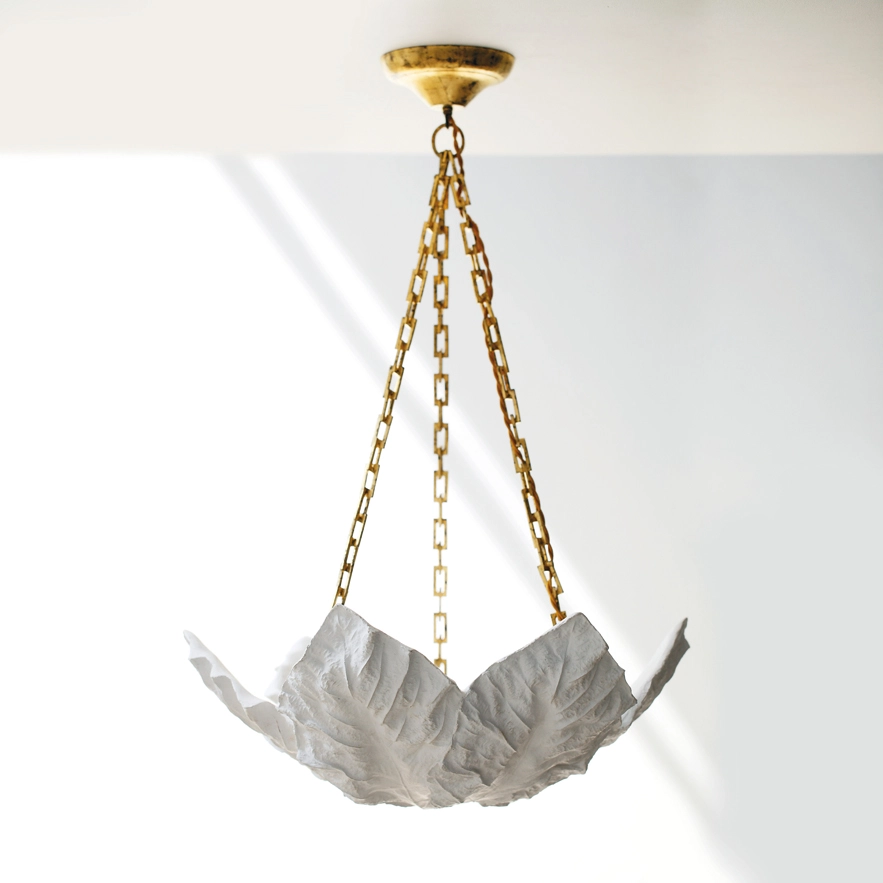
The Folly Gesso Ceiling Light brings a rich gesso finish to cast teak leaves that appear to float from gilded brass chains.
The fluidity of gesso and the rich surface texture has provided a strong and stable decorative surface for millenia. It remains an unsurpassed material for supporting lacquer and gilding and we are proud to bring it into new forms and directions in the 21st century.
